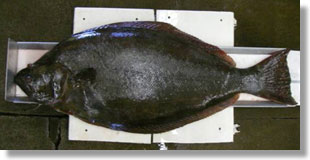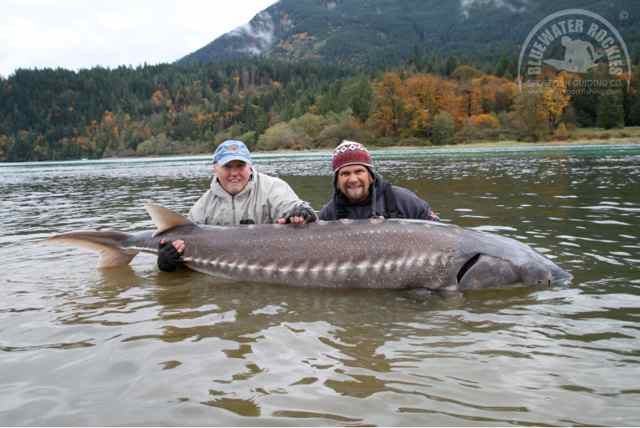Long Range Fish Report
From Sportfishing
From Sportfishing
Fish Report for 1-3-2014

California Outdoors Q & A: Proper Way to Measure Fish?
1-3-2014
California Department of Fish & Wildlife
California Department of Fish and Wildlife
Marine Management News
NEWS RELEASE
FOR IMMEDIATE RELEASE - January 2, 2014
California Outdoors Q & A: Proper Way to Measure Fish?
Question: What is the legal and proper way to measure a fish? Is it with an open mouth, closed mouth, fanned tail or pinched tail? I would appreciate some fish measuring guidelines to determine whether a catch is legal. Thank you. (Rick B.)
Answer: The first rule when measuring fish is to lay the fish flat on its side and always pinch the mouth closed. Most saltwater fish with minimum size limits are measured to total length. This is the longest straight-line distance from the tip of the head to the end of the longest lobe of the tail (California Code of Regulations (CCR) Title 14, Section 1.62). The most accurate method is to place the fish's snout against a perpendicular surface and then measure along the intersecting horizontal surface to the end of the tail. Don't measure using a flexible "tape" over the fish itself or you will be given a longer, false reading.
There are some saltwater fish that are measured to fork length instead (for example, bonito, albacore, barracuda and yellowtail). Fork length is the straight-line distance from the tip of the head to the center of the tail fin (CCR Title 14, Section 1.62). So again, lay the fish flat on its side, pinch the mouth closed and take your measurement from the tip of the head to the center of the fork of the tail. These are the only two measurements that you will need to know for the purposes of the regulations when measuring whole fish. A measurement diagram for saltwater fish and shellfish is available in the ocean sport fishing regulations booklet and online.
All freshwater fish with a minimum size limit are measured to total length (CCR Title 14, Section 1.62).
Question: Is it legal to use underwater attractor lights in ocean waters to attract fish to the boat? (John V.)
Answer: Yes. There are no prohibitions from using underwater attractor lights in ocean waters.
Question: I want to apply for a fishing guide's license but am worried because I had a hunter trespass citation many years ago that was honestly unintentional. It was a case of poor mapping and unmarked fence lines. I paid my fine it never went any further. This was 12 years ago and I have never had any other convictions for any sort of law breaking. Does my single-hunter trespass ticket exclude me from applying for guide status in this state? I am seriously interested in teaching others to care for and respect our outdoor privileges and would love to apply for a guide's license. I don't want to go through the process and pay all the costs though only to be denied at the time my application is reviewed. Can you please tell me if my mistake from years ago will cause my application to be denied? (Doug M.)
Answer: Because your citation was 12 years ago, it was your only citation and you took care of the fines, you should not have a problem getting a guide's license. Applicants are evaluated mostly for recent activity (within five years), or repetitive activity. And for applicants who apply but are denied, any application fees are refunded.
Question: Once I shoot my limit of pheasants, can I give one of my birds to another hunter in the group and continue hunting? (Jerry)
Answer: No. Once you reach your bag limit you are finished hunting for the day. You can give your birds away to other hunters, but that does not then allow you to continue hunting that day.
Question: Is it legal for one person to have two shotguns in a duck blind? (Bob G.)
Answer: Yes, but while it's legal to have more than one shotgun in your blind, keep in mind there is a 25 shell limit at most public shooting areas (state and federal refuges). Hunters often forget this and bring a box of shells for each gun they have but then find themselves in violation of the 25 shell limit. Also required, each gun must be plugged and not capable of holding more than three shells in the magazine and chamber combined, and lots of times nothing larger than 10 gauge shells are allowed in these areas. For more information, please check the Upland Game Bird Regulations available here.
Carrie Wilson is a marine biologist with the California Department of Fish and Wildlife. She cannot personally answer everyone's questions but will select a few to answer in this column each week. Contact her at CalOutdoors@wildlife.ca.gov.
Photos and all archived columns: http://californiaoutdoors.wordpress.com
CDFW Marine Management News
Ocean-related news and information
Visit the Marine Region Website at www.dfg.ca.gov/marine
California Department of Fish and Wildlife
Box 944209
Sacramento CA 94244
Marine Management News
NEWS RELEASE
FOR IMMEDIATE RELEASE - January 2, 2014
California Outdoors Q & A: Proper Way to Measure Fish?
Question: What is the legal and proper way to measure a fish? Is it with an open mouth, closed mouth, fanned tail or pinched tail? I would appreciate some fish measuring guidelines to determine whether a catch is legal. Thank you. (Rick B.)
Answer: The first rule when measuring fish is to lay the fish flat on its side and always pinch the mouth closed. Most saltwater fish with minimum size limits are measured to total length. This is the longest straight-line distance from the tip of the head to the end of the longest lobe of the tail (California Code of Regulations (CCR) Title 14, Section 1.62). The most accurate method is to place the fish's snout against a perpendicular surface and then measure along the intersecting horizontal surface to the end of the tail. Don't measure using a flexible "tape" over the fish itself or you will be given a longer, false reading.
There are some saltwater fish that are measured to fork length instead (for example, bonito, albacore, barracuda and yellowtail). Fork length is the straight-line distance from the tip of the head to the center of the tail fin (CCR Title 14, Section 1.62). So again, lay the fish flat on its side, pinch the mouth closed and take your measurement from the tip of the head to the center of the fork of the tail. These are the only two measurements that you will need to know for the purposes of the regulations when measuring whole fish. A measurement diagram for saltwater fish and shellfish is available in the ocean sport fishing regulations booklet and online.
All freshwater fish with a minimum size limit are measured to total length (CCR Title 14, Section 1.62).
Question: Is it legal to use underwater attractor lights in ocean waters to attract fish to the boat? (John V.)
Answer: Yes. There are no prohibitions from using underwater attractor lights in ocean waters.
Question: I want to apply for a fishing guide's license but am worried because I had a hunter trespass citation many years ago that was honestly unintentional. It was a case of poor mapping and unmarked fence lines. I paid my fine it never went any further. This was 12 years ago and I have never had any other convictions for any sort of law breaking. Does my single-hunter trespass ticket exclude me from applying for guide status in this state? I am seriously interested in teaching others to care for and respect our outdoor privileges and would love to apply for a guide's license. I don't want to go through the process and pay all the costs though only to be denied at the time my application is reviewed. Can you please tell me if my mistake from years ago will cause my application to be denied? (Doug M.)
Answer: Because your citation was 12 years ago, it was your only citation and you took care of the fines, you should not have a problem getting a guide's license. Applicants are evaluated mostly for recent activity (within five years), or repetitive activity. And for applicants who apply but are denied, any application fees are refunded.
Question: Once I shoot my limit of pheasants, can I give one of my birds to another hunter in the group and continue hunting? (Jerry)
Answer: No. Once you reach your bag limit you are finished hunting for the day. You can give your birds away to other hunters, but that does not then allow you to continue hunting that day.
Question: Is it legal for one person to have two shotguns in a duck blind? (Bob G.)
Answer: Yes, but while it's legal to have more than one shotgun in your blind, keep in mind there is a 25 shell limit at most public shooting areas (state and federal refuges). Hunters often forget this and bring a box of shells for each gun they have but then find themselves in violation of the 25 shell limit. Also required, each gun must be plugged and not capable of holding more than three shells in the magazine and chamber combined, and lots of times nothing larger than 10 gauge shells are allowed in these areas. For more information, please check the Upland Game Bird Regulations available here.
Carrie Wilson is a marine biologist with the California Department of Fish and Wildlife. She cannot personally answer everyone's questions but will select a few to answer in this column each week. Contact her at CalOutdoors@wildlife.ca.gov.
Photos and all archived columns: http://californiaoutdoors.wordpress.com
< Previous Report Next Report >
More Reports

1-3-2014
California Department of Fish and Wildlife Marine Management News News Release FOR IMMEDIATE RELEASE - January 3, 2014 New Tagging Requirements for California Sturgeon...... Read More

1-1-2014
December 31, 2013 by DanaMichaels California sturgeon anglers will see a small change to sturgeon tags issued beginning Jan. 1, 2014....... Read More

LongRangeSportfishing.net © 2025. All Rights Reserved.
Website Hosting and Design provided by TECK.net
Website Hosting and Design provided by TECK.net